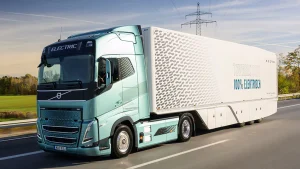
The Tesla Semi – Turning the Impossible Into Justly Late
Tesla Senior Manager of Semi Truck Engineering Dan Priestley took to the ACT Expo 2024 stage to provide an update on their long-haul electric big rig. Priestley amused his audience with remarks like, ‘Our specialty lies in turning impossible into late,’ acknowledging any doubters in attendance with statements like, ‘Tesla specializes in turning impossible into late.”
Electric trucks could make a major contribution to cleaner air, yet battery bottlenecks have limited their production. What are they worth today?
1. The battery
Elon Musk recently told Joe Rogan that the Tesla Semi would feature a 500 kWh battery pack; however, he did not specify which variant.
Charge up 400 miles in just 30 minutes with this electric truck – incredible fast for an EV! Truck drivers who prefer being on the move will appreciate this incredibly convenient feature.
But does that imply the Semi needs a megawatt-level battery pack? According to an internet-inspired calculation, probably not. Fleet Equipment’s Jason Morgan put such claims through rigorous scrutiny – watch his video above for more.
2. The motors
Electromobile passenger cars may make headlines, but electrifying big rigs could bring much greater benefits – which is why Tesla was keen to engage trucking stakeholders through its Semi event.
With its impressive speed and acceleration, this truck certainly met that challenge. Additionally, it boasts much longer range than diesel trucks and recharges in half as much time.
Walmart, UPS, FedEx and Anheuser Busch have already placed orders, believing the Tesla Semi can revolutionize their businesses while eliminating costly and unreliable diesel trucks altogether. Their calculations reveal significant savings on fuel and maintenance expenses along with reduced pollution emissions; hence their eagerness to get their hands on one.
3. The software
Tesla’s truck is central to their vision of electrifying major forms of terrestrial transport, and while electric passenger cars generate far more attention, electrifying big rigs could make a considerable dent in cutting carbon emissions.
One of the Semi’s most impressive capabilities is its ability to avoid jackknifing accidents, which occur when its trailer turns in an opposite direction than its cab. According to Tesla, its software can sense weight distribution and accelerate or brake accordingly to automatically prevent accidents from happening.
Tesla recently used a Semi truck to transport batteries from their Nevada Gigafactory to their Fremont assembly plant, an extremely long journey which traverses mountainous terrain and differing climates. According to Electrek, on that trip alone the Semi averaged an impressive 1.7kWh per mile, an incredible performance given the weight and size of this massive vehicle.
4. The design
As soon as Elon Musk unveiled the Semi in 2016, many in the trucking industry expressed doubt that it would ever materialize due to his history of breaking promises and release schedules. Many expected an announcement regarding delivery timelines but none ever materialized.
But thanks to orders from PepsiCo, Sysco, Anheuser-Busch and Walmart – which may well make an impactful difference in freight industry dynamics – the semi is now more realistic than ever and could even alter how people view freight transporting services.
At last week’s ACT Expo in Austin, where high-tech battery and hydrogen powered semis were on display, Tesla did not bring its Semi. Instead, their sights may have been set on Volvo, Daimler, Nikola and others within the industry and hope that real world data from PepsiCo and others can rekindle interest for it.
5. The price
Elon Musk made an aggressive claim that electric semi trucks will save fleets money in a significant manner. According to Elon, Tesla trucks cost less to operate per mile than their diesel counterparts and PepsiCo began using Tesla trucks for deliveries late 2022 claiming this method saved them significantly more money.
Priestley noted that his Semi’s battery and powertrain take up minimal space, leaving maximum payload for cargo. Additionally, the truck was designed to detect weight distribution and prevent jackknifing – one of the most dangerous accidents in trucking.
Though Tesla won’t replace all diesel trucks overnight, this is an encouraging sign for electric trucking in general and Tesla specifically. With more and more charging stations popping up around the globe, long-haul freight could soon utilize this technology.


